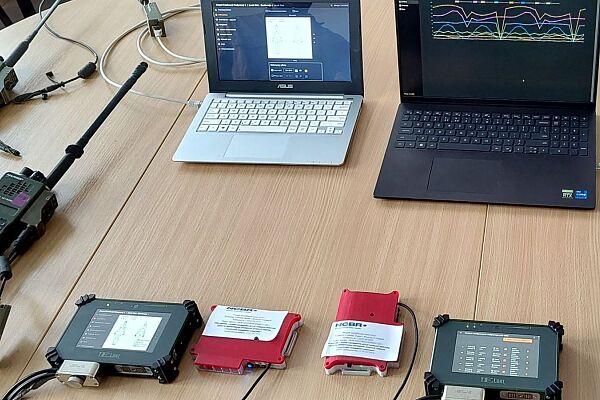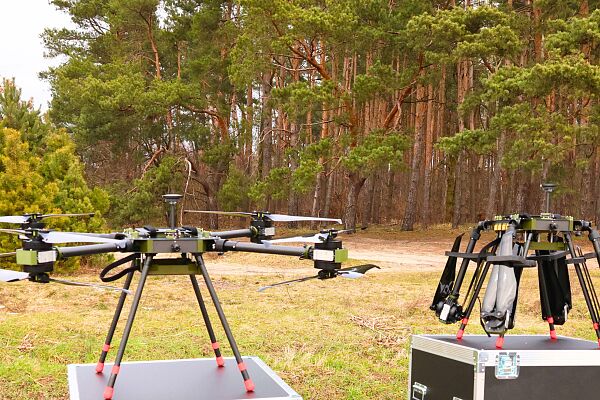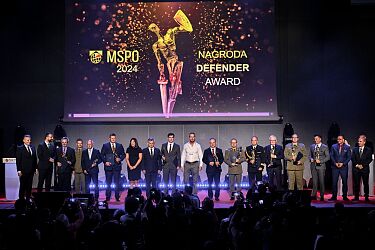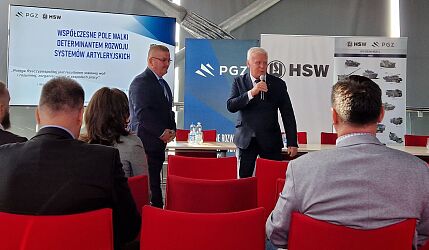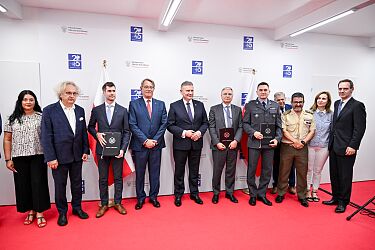News

WAT technologies ready for implementation - join the XXXII MSPO in Kielce and see the latest developments
As emphasised by the Rector-Commandant of the Military University of Technology, the offer presented at this year's MSPO is the university's response to the specific needs of the technologically advanced army. “The Military University of Technology makes a real contribution to the development of our Armed Forces; the results of WAT scientists’ projects delivered within the scope of scientific-industrial consortia are implemented into production and become part of the equipment of the Polish army, an example of which is the P-18 PL long-range radar or the New Amphibious Infantry Fighting Vehicle Borsuk, which is planned for production. WAT effectively contributes to the Polish Armed Forces’ equipment enhancement. In the last decade, there were as many as 35 such implementations the Academy participated in - quantum, laser, optoelectronic and ICT technologies have been used in new products that can make our army even more technologically advanced. These solutions also targted other services. This year’s MSPO is the showcase for these development,” says Brig. Gen. Prof. Dr. Hab. Engineer, Przemysław Wachulak.
Currently, the Military University of Technology is in the process of implementing 35 security and defence projects financed from domestic funds and 17 from foreign sources (EDA, EDF, NATO). The inventions presented at the trade fair examplify the effectiveness of the university's research and implementation activities.
WAT TECHNOLOGIES REGISTERED TO THE DEFENDER AWARD COMPETITION
The WAT Institute of Optoelectronics entered the competition with its Quantum optical cryptography modular system. Command support, communications and ict, cyber security, cryptology, identification, navigation The system consists of three components: a quantum random number generator, a quantum key distribution system, and an optical phase coding system. Each of these modules is an innovative device that uses quantum phenomena to secure data transmitted in optical telecommunications networks.
The Mobile Radio-Electronic Warfare Laboratory Station – MSL WRE – was also made at the Faculty of Electronics of the Military University of Technology; the prouduct has been registered for the Defender Award competition in the category of equipment supporting the training process. The system serves as a radar warfare tool - the exhibition consists of two elements; a vehicle which is a supporting platform for the Mobile Laboratory Station with an antenna system. The other is an unmanned aerial vehicle, i.e. a drone carrying transceiver systems. L-band signals are transmitted and received in a closed system, without external emission; results are displayed on four monitors located inside the base vehicle.
Another technology developed with the participation of WAT was registered by CRW Telesystem MESKO, an industrial partner of the Institute of Optoelectronics of WAT. The Integrated Optoelectronic Support Environment for the Modern Battlefield also enters the competition in the of command support equipment, communications and information technology, cybersecurity, cryptology, identification and navigation group. The device has four functionalities: a laser radiation warning system, a laser rangefinder, a friend-foe identifier, and optical communication in free space. The laser radiation warning system was developed specifically for Polish Army vehicles and makes it possible to determine from what direction the laser radiation coming from the enemy target illuminator was generated. Information about detected threats is transferred automatically, without human intervention, to the Combat Management System. As a consequence, the system allows other vehicles traveling in the convoy to be warned about the existing threat.
READY-TO-IMPLEMENT TECHNOLOGIES AT THE WAT EXPO STAND
Medical evacuation decision support system based on soldier vital signs monitoring and enhanced situational awareness developed at the Faculty of Electronics, Military University of Technology. Devices built into the uniform continuously monitor the soldier's health and analyse it on an ongoing basis; thus when on the battlefield, emergency medical services may segregate the wounded depending on the degree of injury and prognosis, i.e., triage. Thus, the system supports rescuers in the evacuation decision-making process. Vital signs monitoring outcome is delivered with a specially developed communications protocol via an integrator to HMS C3IS Jasmin at the brigade level medical support group station. At the WAT stand, it will be possible to see the system elements placed on a human phantom, a soldier's personal terminal with a fragment of the communication system and a medical support group workstation with an analysis and inference algorithm running on the screen and a medical portal will also be shown.
Another interesting technology related to military medicine is the Automatic syringe constructed at the WAT Technology Transfer Centre. The syringe is used to deliver medications stored in the commonly known so-called insulin ampoules. The syringe is used for injections with one hand, thus it is possible to independently and efficiently administer (also through outer clothing) the intramuscular drug in situations of direct threat to human health and life, with particular emphasis on the situation on the battlefield. The correctness of the syringe design as well as the effectiveness of the needle’s bactericidal coating, were verified as prototypes and are subject to legal protection. The solution may be used by the Polish Armed Forces, Border Guard, Police, Fire Service and rescue services.
Cybersecurity - WAT presentations at MSPO include RPaSD tool for detecting fake news sources on social networks. The innovative software, created at the Faculty of Cybernetics, was designed to address the challenges of identifying and analyzing the spread of information in networks.
The same department will also present the concept of visual navigation for small unmanned aerial vehicles. The visual navigation module enables drones to navigate autonomously in scenarios without GPS signals, i.e. in electronic warfare conditions. UAV drones play a key role in modern military operations, and the module offered by WAT experts integrates visual data from cameras and compasses and takes into account data from accelerometers to increase their precision and reliability. The use of a visual navigation module make UAVs able to continue the mission in an electronic warfare zone or interrupt it and ultimately return to a safe zone, so that the drone is not destroyed or captured by enemy forces.
The last technology presented at the WAT epxo stand combines medicine, computer science and navigation. Smart map of life - a system for rescuing wounded soldiers from the battlefield - Faculty of Civil Engineering and Geodesy. The map enables the location of casualties on the battlefield, a preliminary assessment of their physical condition and the provision of medical assistance. The system uses geoinformation and biomedical sensors the application provides functionalities for UAV pilots and paramedics, including ordering and conducting drone missions, creating photo sketches, marking victims and completing vital signs measurements, marking contamination, threats and obstacles, displaying a passability layer, designating routes to reach victims and evacuation routes.
In addition, the WAT expo stand will present the competencies of the WAT Military Training School in battlefield rescue. Visitors will be presented with rescuer equipment, methods of providing first aid and stopping intensive bleeding (using mannequins).
WAT students will present their sections of interest - the university supports their self-development in the areas of shooting, mountain climbing, parachute jumping, diving, and asymmetric battlefield operations. The exhibition will include equipment used by the sections and an interactive shooting range.
MSPO s the place to see the current offer of military and civilian studies at WAT.


